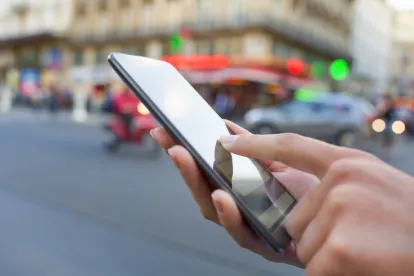Recently, an elderly couple – who were both plaintiffs, one for personal injuries and the other for loss of consortium – gave testimony about their active lifestyle (outdoors and in the bedroom) before a slip-and-fall accident. Some of their claims were hard to believe given the slow, measured pace with which they entered the room, but they are the only people who know the intimate details of their lives.
While it’s possible this couple was truthful, insurance claims frequently suffer from exaggerated injuries and malingering. According to the Coalition Against Insurance Fraud, fraud constitutes 10 percent of property and casualty losses each year, and only 8 percent of people believe they will get caught if they commit insurance fraud.
Smart Data in Evidence
“Smart data,” however, gradually is starting to impact insurance investigations and the discovery process. Smart data is digital information logged through common use of cell phones, electronic tracking and self monitoring tools. These devices have become embedded in the fabric of our daily lives, making them useful allies in a litigation context. Earlier this year, pacemaker data was a key piece of evidence in charging a man with arson and insurance fraud after he purportedly packed a suitcase, broke a window and carried certain items to his car upon waking up to a fire in his home. Data from the man’s pacemaker was reviewed for signs of exertion, leading a cardiologist to opine that it was “highly improbable” the claimant gathered his belongings in such a short period of time due to his medical condition.
In personal injury cases, a primary area of focus is learning what things the person used to do that can no longer be done or must be performed on a limited basis. With the advent of wearables, smartphones and self-tracking and implanted devices, data is now available that may confirm or refute a plaintiff’s claims.
Headlines were made in a civil case after a law firm planned to use activity data from a Fitbit® to help prove the effects of an accident on their client in a personal injury case. The plaintiff was a fitness trainer who led an active lifestyle. To prove her injuries, data from the Fitbit was used to show the plaintiff’s activity levels were under a baseline for someone of her age and profession as a result of the accident.
Wearables, such as the Fitbit, also are finding traction with our aging population. As older people become more engaged in their health due to chronic diseases, a study by Accenture found that 48 percent of Americans over age 65 are willing to use wearables and that 17 percent of Americans over age 65 already use wearable technology. As such, activity/health tracking apps or other wearable devices used by a claimant should routinely be explored.
Smartphones also contain a plethora of data that may assist in the defense of a claim. For example, the iPhone is capable of logging a user’s Frequent Locations – a feature that is generally enabled when authorizing Location Services for the Maps app and other applications. (To view Frequent Locations on an iPhone go to Privacy | Location Services | System Services | Frequent Locations.) This data generally is kept for approximately 45 days. If enabled, the Google Maps app also will log a detailed and searchable history of a user’s location history.
There are many other apps capable of tracking user location, and a list of apps with Location Services enabled should be demanded during discovery, where appropriate. While this data may not reveal where a plaintiff was at the exact time of a slip-and-fall event, it may reveal a plaintiff’s daily routine or the frequency of visits at/near the location where the accident happened and provide insight as to whether an injured plaintiff is confined to home or living an active lifestyle. Additionally, a plaintiff’s claim of confinement may be tested through apps such as Uber and other ridesharing services that track user rides.
In addition, the injured plaintiff may complain of disruptive sleep patterns following an accident. In 2016, Apple added the Bedtime feature to its Clock app, essentially tracking user sleep patterns. Other apps are available to monitor sleep patterns and health concerns, making it easier to prove (or disprove) these claims.
Finally, photographs can be a critical component to any case. Most plaintiffs do not provide digital files of photographs but rather persist in providing hard copies or PDFs at best. Digital photos are embedded with data that may reveal who took the photograph; the device with which the photo was taken; and date, time and location information in some instances. In 2015, Apple introduced Live Photos (which are actually 3-second videos) that may provide even more context surrounding a photo. Through Google’s Motion Stills app, these photo files may be more easily shared. Discovery demands should therefore request identification of the device with which the photo(s) were taken, inspection/production of the digital files and Live Photos where available.
Conclusion
In closing, smart devices may not be perfect and may be manipulated by plaintiffs or used by others to create false readings. Nonetheless, once these devices are discovered, action should be taken to preserve, acquire and authenticate any relevant data to ensure its legitimacy and accuracy in defense of personal injury claims.



 />i
/>i

